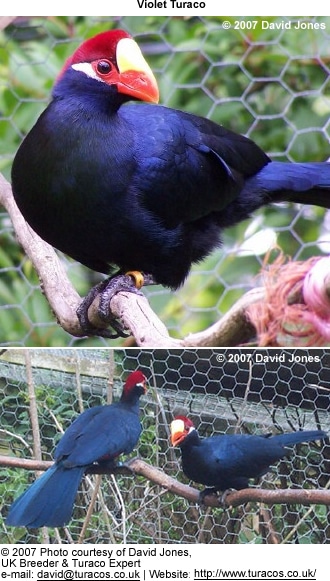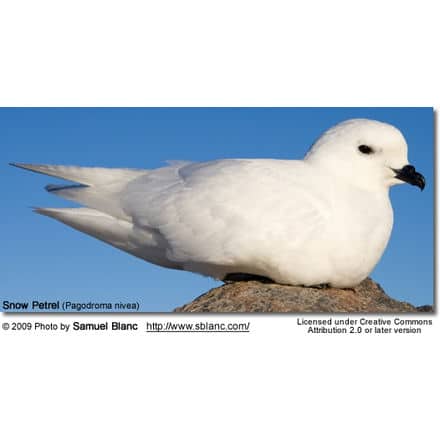Great Horned Owl Species
There are many great horned owl species which we have classified and placed in order of where they are found. There are also links to the page on each species with more detailed information on each species as well as images for identification purposes.
You can find our list of all owl species here.
Physical Differences
- Size: Even though there are considerable variations in plumage coloration between the different races, they all share the same body shape, although considerable differences in size exist. Depending on subspecies, they can weigh between 1.3 – 5.7 lbs (0.6 to 2.6 kg).
- The color of the plumage varies individually and regionally- those birds found farther north tend to be paler than southern populations. Species found in the Sub-Arctic are light-colored / nearly white while those in Central America are a deep chocolate brown.
- Eyes: All – except the Venezuelan race (Bubo virginianus nacurutu) – have yellowish eyes.
Subspecies, Ranges and ID:
- Common Great Horned Owl (Bubo virginianus virginianus – Gmelin, 1788) – Nominate form
Range: In the United States from Minnesota east and north to Nova Scotia and Prince Edward Islands in Canada. They are all-year residents (non-migratory), except for some juvenile short-distance dispersion as they seek out their own territories.
ID: Plumage mostly brown tinged orange-brown. The plumage below is barred distinctly blackish-brown. Their feet are tawny to buff, often barred black.
- Venezuelan Great Horned Owl or South American Great Horned Owl (Bubo virginianus nacurutu – Vieillot, 1817) – Includes proposed subspecies scotinus, elutus and deserti
Range: Isolated populations are found in the lowlands of eastern Colombia east to the Guianas; and in Bolivia east and north to northeastern Brazil and south through the Amazonas basin to east central Argentina to the vicinity of Buenos Aires. They are all-year residents (non-migratory), except for some juvenile short-distance dispersion as they seek out their own territories.
ID: Dull-brownish owls with long bills. They are the only subspecies with dark amber (instead of yellow) eyes. Those found in the semi-dry interior of Brazil often have white markings on the upper tail feathers and the ear coverts (feathers covering the “ears”).
- Northern or Subarctic Great Horned Owl or Western Horned Owl (Bubo virginianus subarcticus – Hoy, 1853)
Range: Found in northwestern British Colombia east through Mackenzie County, Alberta to Hudson Bay and south into the United States, where they are found in Wyoming and North Dakota.
This race – or intermediates between this form and ssp. pallescens and/or lagophonus (or unnamed race) – also occurs south to Arizona, New Mexico and southwestern Texas (where they are found in the Guadalupe Mountains).
Birds found in the Rocky Mountains of west central Canada south to west central USA are often separated as ssp. occidentalis. However, they are now by most authorities identified as race subarcticus.
ID: The largest-bodied subspecies of all. This pale form has a plumage that is essentially whitish with a faint creamy tinge on the upper plumage. The plumage below is variably barred blackish – from indistinct to heavily barred.
The palest amongst them can be confused with young, female Snowy Owl. Their feet are whitish to buff.
- Californian Great Horned Owl or Coast Horned Owl (Bubo virginianus pacificus – Cassin, 1854)
Range: Found along the central and southern coast of California east to the Sierra Nevada mountain range (avoiding the San Joaquin Valley), south to northwestern Baja California and Mexico. They intergrade with ssp. pallescens in San Diego County.
ID: Their plumage is a rich brown, with a dark underside that is barred distinct, but less pronounced, than in ssp. saturatus. Their feet are mottled dark.
- Coastal Great Horned Owl or St. Michael Horned Owl (Bubo virginianus saturatus – Ridgway, 1877)
Range: Occur along the Pacific coast from southeastern Alaska south to northern California. They are all-year residents (non-migratory), except for some juvenile short-distance dispersion as they seek out their own territories.
ID: A dark, dull and somewhat greyish form with heavily barred underside. Feet fairly dusky overall.
- North Andean Great Horned Owl or Ecuadorian Great Horned Owl (Bubo virginianus nigrescens – Berlepsch, 1884)
Range: Found in the Andes of South America – from Colombia to northwestern Peru – where they inhabit dry temperate and puna (high plateau) zones. They are all-year residents (non-migratory), except for some juvenile short-distance dispersion as they seek out their own territories.
ID: Plumage is dark grey-brown with heavy blotching.
- Desert Great Horned Owl or Virginia Great Horned Owl (Bubo virginianus pallescens – Stone, 1897)
Range: The San Joaquin Valley in the Central Valley of California, as well as the deserts of southeastern California east through southern Utah and west Kansas, southwards to Guerrero and western Veracruz in Mexico. Intergrades with ssp. pacificus in San Diego County.
ID: One of the smaller subspecies. Plumage is pale dusky buff with indistinct barring (particularly below). The white are whitish.
- Yucatan Horned Owl or Yucatán Great Horned Owl (Bubo virginianus mayensis – Nelson, 1901)
Range: Yucatán Peninsula. They are all-year residents (non-migratory), except for some juvenile short-distance dispersion as they seek out their own territories.
ID: One of the smaller subspecies. Medium-pale plumage.
- Baja California Great Horned Owl or Dwarf Horned Owl (Bubo virginianus elachistus – Brewster, 1902)
Range: Only found in southern Baja California in Mexico. They are all-year residents (non-migratory), except for some juvenile short-distance dispersion as they seek out their own territories.
ID: Resembles the Californian Great Horned Owl (Bubo virginianus pacificus), but about 5 – 10% smaller in size. It is the smallest race of all.
- Northeastern Great Horned Owl or Newfoundland Horned Owl (Bubo virginianus heterocnemis – Oberholser, 1904) – Possibly not separable from the Coastal Great Horned Owl (Bubo virginianus saturatus) and potentially should be merged with latter.
Range: Labrador, Newfoundland and northern Quebec in eastern Canada south into the Great Lakes region in northeastern USA.
ID: Dark grey plumaged, heavily barred owl. The pale feet are dusky mottled.
- Northwestern Great Horned Owl (Bubo virginianus lagophonus – Oberholser, 1904) Northwestern Horned Owl (Bubo virginianus lagophonus) (Oberholser, 1904) – Except for a slightly greyer plumage, this form is possibly not separable from the Coastal Great Horned Owl (Bubo virginianus saturatus) and potentially should be merged with latter.
Range:Range: Inland Alaska south through mountainous areas of British Columbia south through Washington to Oregon and west to northwestern Montana. Wintering vagrants have been reported as far south as Colorado and Texas.
ID: Resembles the Coastal Great Horned Owl, except for a slightly greyer plumage. The feet have some dusky barring.
- Central American Great Horned Owl or Oaxaca Horned Owl (Bubo virginianus mesembrinus – Oberholser, 1904)
Range: Isthmus of Tehuantepec in Southern Mexico south to western Panama. They are all-year residents (non-migratory), except for some juvenile short-distance dispersion as they seek out their own territories.
ID: A mid-sized form. Darker plumaged than the otherwise similar Yucatán Great Horned Owl (Bubo virginianus mayensis)
- Rocky Mountains Great Horned Owl (Bubo virginianus pinorum – Dickerman and Johnson, 2008)
Range: They occur in the Rocky Mountains population south of the Snake River south to Arizona, New Mexico and the Guadalupe Mountain Range in southeastern New Mexico and West Texas.
ID: Mottled feet. Plumage medium grey above and moderately barred and tinged buff below.
Disputed or Proposed Forms (not universally recognized as valid)
- Arctic Horned Owl or White Horned Owl (Bubo virginianus arcticus – Swainson, 1871)
Range: Found in boreal and alpine North America. Occasionally winters in northern United States and the Rocky Mountain region.
ID: Very pale colored plumage, often whitish. Resembles the Snowy Owl.
- Coast Horned Owl or Coast Great Horned Owl (Bubo virginianus icelus – Oberholser, 1904)
Range: Coast of California from north of Los Angeles to San Francisco Bay
- Colombian Horned Owl (Bubo virginianus colombianus) – Lehmann, 1946 – currently included with the South American Great Horned Owl (Bubo virginianus nacurutu)
Range: Central Colombia
- Newfoundland Horned Owl (Bubo virginianus neochorus) – Oberholser, 1914 – believed to be synonymous with the similar Northeastern Great Horned Owl (Bubo virginianus heterocnemis)
Range: Newfoundland and Nova Scotia
- Pale Horned Owl (Bubo virginianus occidentalis) – Stone, 1896
Range: Found in the Rocky Mountains of west-central Canada south to west central USA. Believed to be based on a wintering individual.
- Bahia Horned Owl (Bubo virginianus deserti – Reiser, 1905) – Proposed species, but often included with the South American Great Horned Owl (Bubo virginianus nacurutu)
Range: Eastern Brazil in South America
- Bubo virginianus elutus – Proposed subspecies currently included with the South American Great Horned Owl (Bubo virginianus nacurutu)
Range: Eastern Colombia
- Bubo virginianus scotinus – Proposed subspecies currently included with the South American Great Horned Owl (Bubo virginianus nacurutu)
Range: Venezuela
- Snyder’s Great Horned Owl (Bubo virginianus scalariventris – Snyder, 1961)
Range: Central Canada
- St. Michael Horned Owl (Bubo virginianus algistus – Oberholser, 1904)
Range: Found along coastal western Alaska. May consist of birds of other species that wandered out of their normal range, and/or intermediates of ssp. subarcticus, saturatus and lagophonus.
Formerly included …
The similar Magellanic Horned Owls (Bubo [virginianus] magellanicus) from the Andes of Peru was formerly considered a subspecies, but based on DNA testing, different vocalizations and smaller size and paler plumage details, this race was separated.
More Owl Information
- Owl Information
- Index of Owl Species with Pictures
- Owl Eyes / Vision Adaptations
- Pygmy Owls
- Barn Owls
- Horned Owls
- Scops Owls
Beauty Of Birds strives to maintain accurate and up-to-date information; however, mistakes do happen. If you would like to correct or update any of the information, please contact us. THANK YOU!!!




